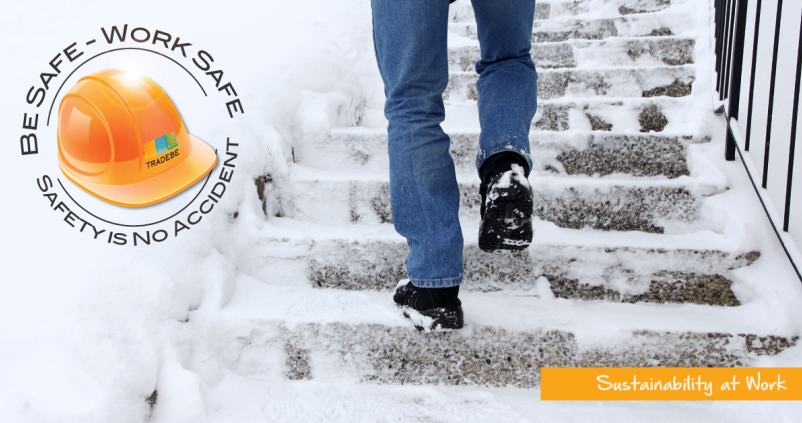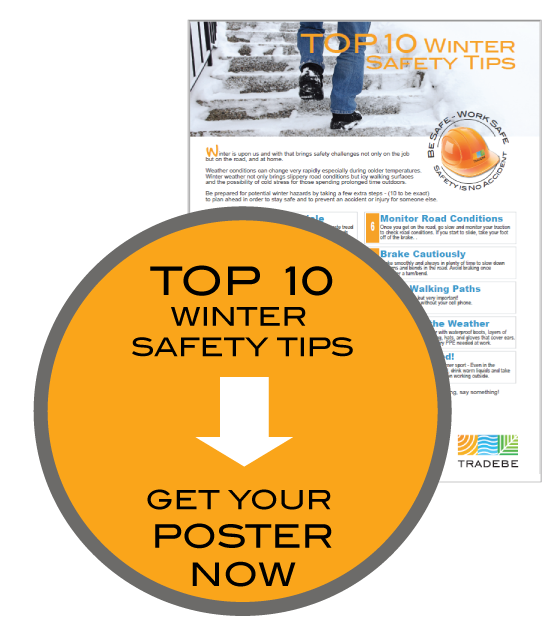
Category
Health & SafetyCreation date
The Winter season is upon us and with that brings challenges not only on the job but on the road, and at home. While we count down the days to spring and warmer temperatures, or for some of us enjoying a mild winter depending on where you are – we all need to be proactive to stay safe and healthy this winter. Weather conditions can change very rapidly especially during colder temperatures. Winter weather not only brings slippery road conditions but icy walking surfaces and the possibility of cold stress for those spending prolonged time outdoors.
Of course, there are the obvious ways to stay safe including giving ourselves more time to get to our destinations, driving slower, and dressing warmly. However, to best prepare for potential winter hazards, there are some extra steps we can take by planning ahead. National Highway Traffic Safety Administration, NHTSA, and Occupational Safety and Health Administration, OSHA have published "Safe Driving" as a good guideline and resource.
TRADEBE IS PLEASED TO ALSO SHARE WITH YOU OUR SAFETY POSTER TOPIC: TOP 10 WINTER SAFETY TIPS!
Download your Poster (PDF) now and feel free to share and/or print the Poster and display where your team can see it. We hope it proves to be useful to you.
Top 10 Winter Safety Tips:
- Check your vehicle’s safety including tires for adequate tread and tire pressure. Your ability to maneuver on wintry roads depends on this which is why it is #1 on our list!
- Carry an Emergency Kit (flashlight, warming blankets, flares) and First Aid Kit inside your vehicle.
- Never leave home without your cell phone.
- Remove snow and ice from your vehicle before you get on the road. You don’t like when your car is hit by flying snow and ice melting off other vehicles – neither does anyone else.
- Leave early to allow extra time to arrive at your destination. (slow down)
- Slow down and monitor your traction once you get on the road to check road conditions.
- Brake smoothly and always in plenty of time to slow down for turns (never wait to brake once you enter a turn).
- Promptly clear snow and ice from sidewalks and walking areas (parking lots) and apply de-icing materials. Whenever possible, begin early when snow has just fallen and is lighter to help avoid muscle strains. Don’t forget to also clear around fire hydrants and mailboxes.
- Dress for the cold weather with waterproof boots, layers of insulative protective clothing, hats, and gloves that cover ears.
- Don’t forget to stay hydrated and take frequent breaks to warm up when working outside
Also, be aware of potential hazards not only at work but wherever you are. If you see something, say something! If we all take ownership, then we can help to not only keep ourselves safe but also help to prevent an accident or injury for someone else.
For those of us working outside in the elements, cold stress is a serious concern and one where vigilance for ourselves, as well as others, is key to keeping our team safe. OSHA.gov has published a handy informational card on “Protecting Workers from Cold Stress”.
At Tradebe, our priorities are safety and the protection of people and the environment. Safety is a common “water cooler” topic here at Tradebe where a culture of Safety is Top Priority. If Safety is important to your business, catch the latest buzz: Subscribe Now…
“Be Safe - Work Safe. Safety is No Accident!”
Jeremy Paradis, Director of Health & Safety, Tradebe USA
#BeSafeWorkSafe #WinterSafety #ColdStress #SafetyisNoAccident
Resources:

